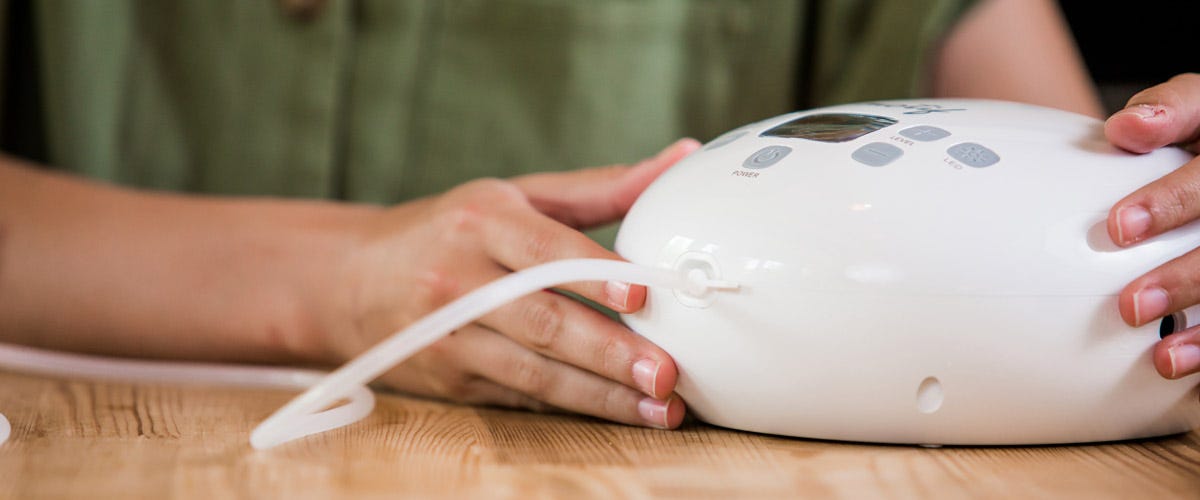I get lots of questions from new moms about when and how to start exercising again after having a baby. What’s safe? How do I know my body is ready? Is there anything I should watch out for? These are all great questions and while I’m going to answer all of these in a general way, it’s really important to ask your health care provider all of those questions. They know the particulars about you and your delivery and will be able to tailor a postpartum exercise recommendation just for you.
Remember 5-5-5
I always recommend the 5-5-5 activity rule for my clients after the birth of their baby: 5 days in bed, 5 days around the bed, 5 days around the house. Basically, you need to rest for about 2 weeks! Your body has been working so hard for the last 9 to 10 months, growing a baby and then working really hard to birth him or her. It needs time to recover! This holds true whether you had a vaginal delivery or C section.
The only thing you should concern yourself with for the first two weeks is resting and feeding your baby. That’s it! This is a time in your life when you need to take all of your friends and family up on the offer to help—let them go to the grocery store for you, rotate your laundry, and wash your dishes. They all want to help so make sure you let them know what would be helpful to you.
A pregnancy back brace can be really useful in those first two weeks, too. The gentle compression provides your internal organs with support as they settle back into their pre-pregnancy positions. Also, because your abdominal muscles are a little stretched out from making space for baby, postpartum compression supports your core and helps prevent diastasis recti, encouraging those muscles to start to come back together. It also helps you sit with good posture while you’re admiring and feeding your baby.
Many moms find themselves hunched over for a large part of the day, which can lead to a sore back and shoulders and only adds to the aches and pains of recovery! Using a postpartum recovery garment can help support your body during this initial recovery and help prepare you for getting back to your normal activities.
Pelvic Floor Exercises
About 2 weeks after a normal vaginal birth is a good time to start incorporating some daily strengthening exercises for your core and pelvic floor muscles. These muscles have done a lot of hard work to bring your baby into the world, so they definitely need some TLC before starting back to your usual workout routine. The goal isn't to get a jump on weight loss, it's to have a healthier postpartum journey. Breathing exercises, pelvic tilts, kegel exercises, arm/shoulder stretches, and walking are a perfect place to start. As you start to resume your normal household and daily physical activities, it's a good idea to wear your postpartum recovery garment anytime you’ll be more active (washing/loading dishes, picking up/carrying older kids, walking for more than 15 minutes).
The reason for this is that your pelvic floor and abdominal muscles are still not strong enough for the intra-abdominal pressure these activities can create. Pelvic floor and organ prolapses and hernias can also happen during the initial postpartum period and one way to avoid that is to give those muscles external support until they are once again ready to do that job on their own.
If you had an uncomplicated, vaginal delivery and you did some abdominal recovery exercises in the immediate postpartum, then you’re probably ready to resume your regular exercise routine around six weeks postpartum. Always start slow! This isn't the time to jump right into a high-intensity exercise class. Listen to your body and if you notice any heaviness in your pelvis, feel like something is hanging out, or if you experience incontinence, please find a physical therapist in your area who specializes in pelvic floor therapy.
None of those things should be something you deal with forever! Be patient with yourself as you get back into your usual exercise program. It’s been awhile since you were so active and it will take some time to build up your energy level and endurance again. Stick with it, though, and soon you’ll be back in the game and better than ever!
About the Author
Rebekah Mustaleski is a Certified Professional Midwife with Roots & Wings Midwifery in Knoxville, TN, where Rebekah promotes evidence-based maternity care for families seeking an out of hospital delivery. She is working to improve maternal outcomes during the childbearing year and to promote a sustainable business model for midwifery practices across the country. Rebekah is co-owner of Roots & Wings Midwifery, LLC as well as Treasurer for the Tennessee Midwives Association.









